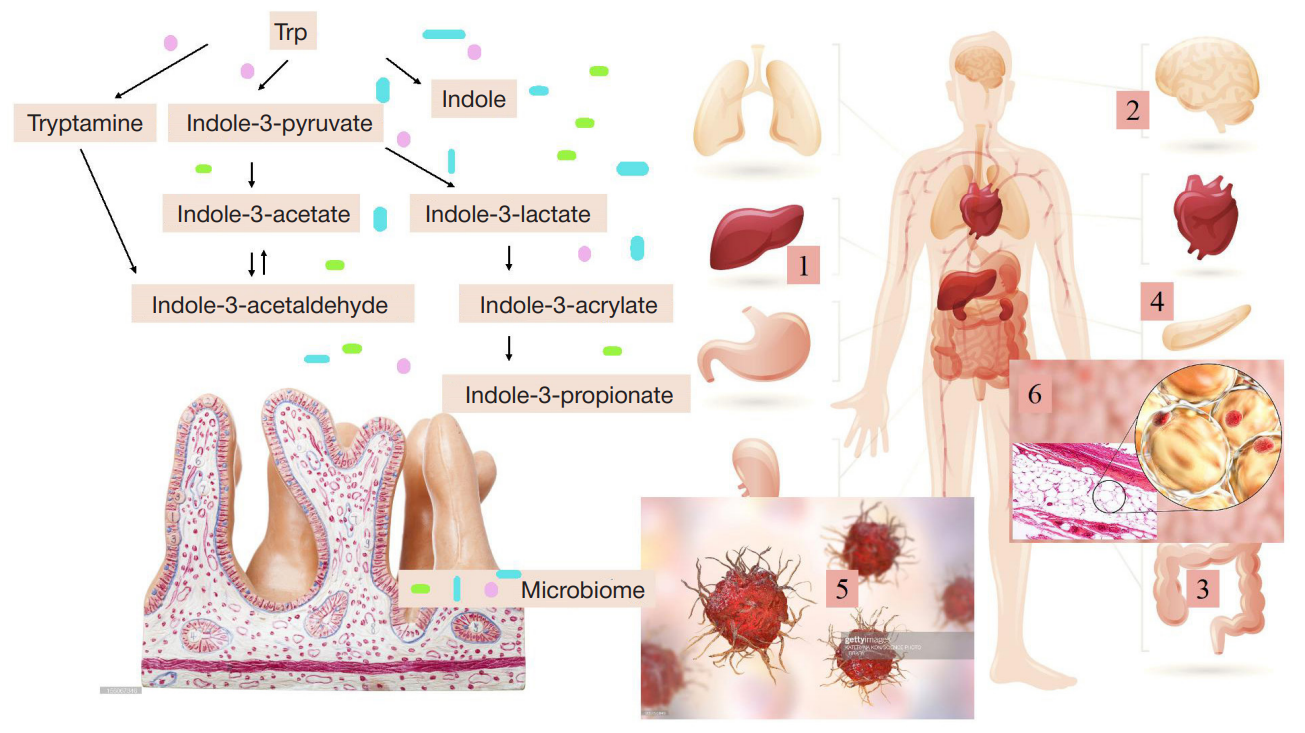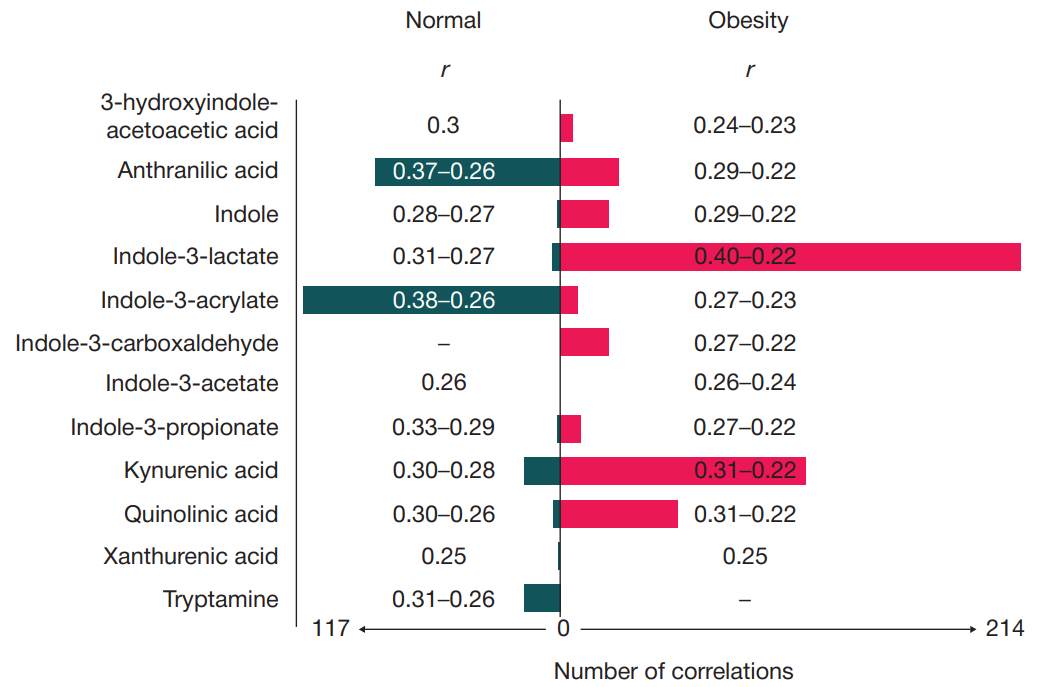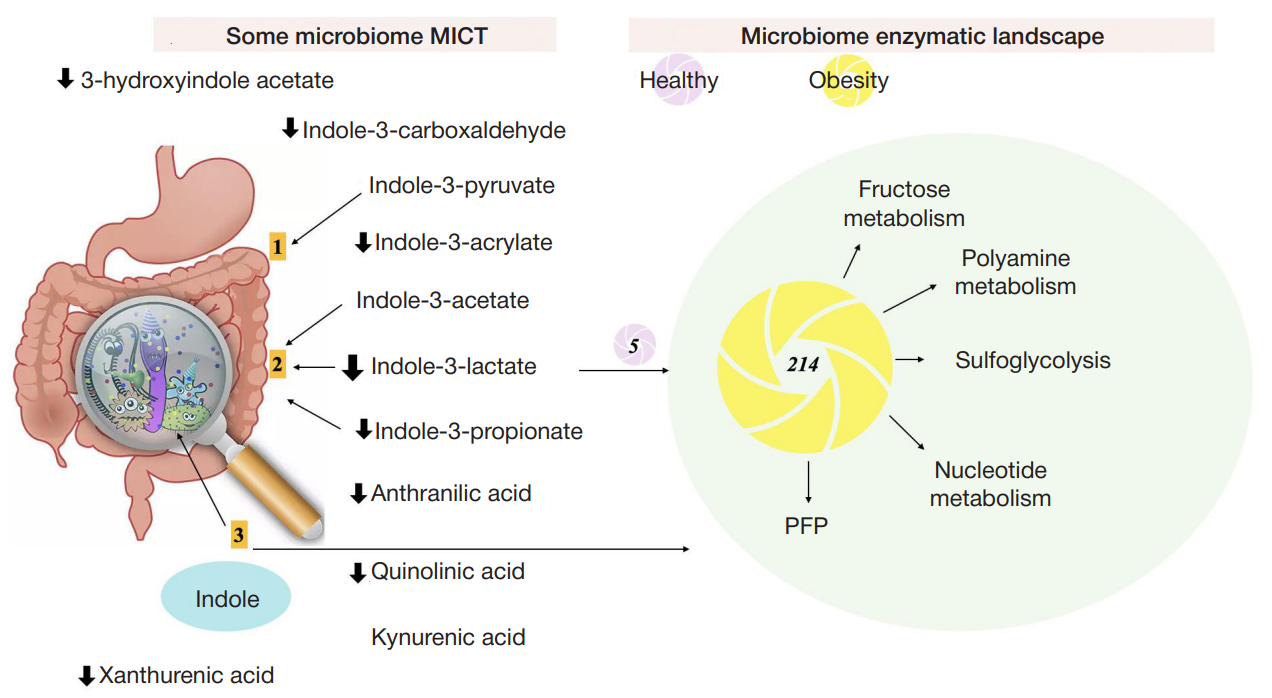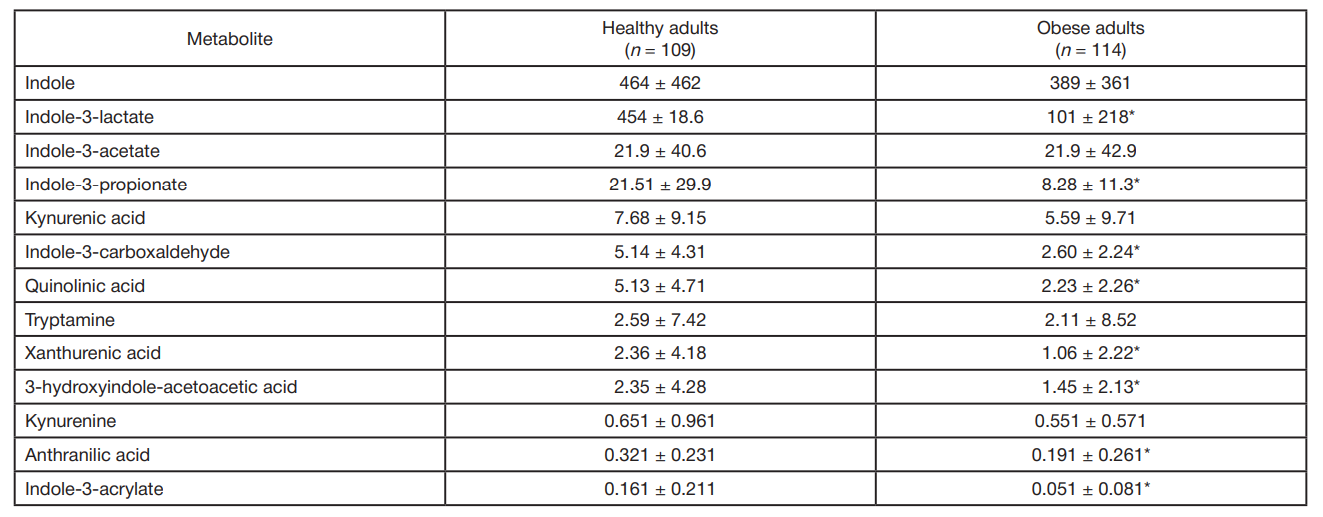
This article is an open access article distributed under the terms and conditions of the Creative Commons Attribution license (CC BY).
ORIGINAL RESEARCH
Tryptophan catabolites and predicted gut flora enzyme-encoding genes
1 Pirogov Russian National Research Medical University, Moscow, Russia
2 Peoples' Friendship University of Russia, Moscow, Russia
3 Center for Digital and Translational Biomedicine, Center for Molecular Health, Moscow, Russia
4 Kazan (Volga Region) Federal University, Kazan, Russia
5 Dmitry Rogachev National Medical Research Center of Pediatric Hematology, Oncology and Immunology, Moscow, Russia
6 Centre for Strategic Planning and Management of Biomedical Health Risks of the Federal Medical Biological Agency, Moscow, Russia
7 National Medical Research Center of Endocrinology, Moscow, Russia
Correspondence should be addressed: Olga P. Shatova
Ostrovityanova, 1, Moscow, 117997, Russia; moc.liamg@po.avotahs
Funding: the study was performed as part of the Assignment № 0373100122119000041 for the project “Creation of a bank of blood serum and fecal samples from healthy donors and patients with obesity, metabolic syndrome, type 2 diabetes mellitus, impaired mucosal barrier of the gastrointestinal tract with the aim of identifying candidate species-specific mediators of the quorum sensing human microbiota systems modulating the endocrine and metabolic function of adipose tissue”.
Author contribution: Shatova OP — primary data acquisition, statistical processing, manuscript writing and preparation of figures; Gaponov AM — manuscript writing; Grigoryeva TV — microbiome assessment; Vasiliev IYu — microbiome assessment and statistical data processing; Stoletova LS — data analysis; Makarov VV, Yudin SM — writing parts of the manuscript; Roumiantsev SA — study concept, manuscript editing; Shestopalov AV — study concept, data analysis, manuscript writing and editing.
Compliance with ethical standards: the study was approved by the Ethics Committee of the Pirogov Russian National Research Medical University (protocol No. 186 of 26 June 2019). All patients submitted the informed consent to the use of biomaterial for scientific purposes.





